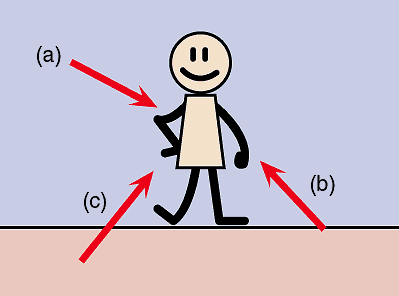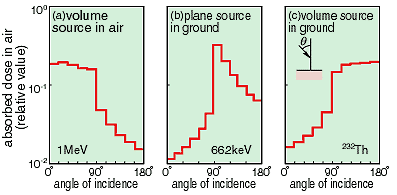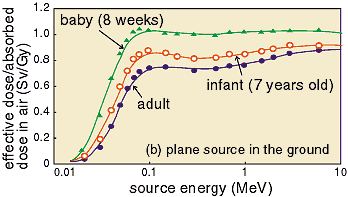The effective dose E is a very important, convenient quantity for expressing quantitatively
the stochastic effect of radiation to man, and is widely used
in dose evaluation for nuclear work as well as for the public
in the environment. But in principle effective dose is a quantity
which is impossible to measure directly because it is the sum
of organ and tissue equivalent doses multiplied by appropriate
weighting factors. Therefore, the effective dose is usually evaluated
indirectly from the measurements of the absorbed dose in air,
by the use of conversion factors obtained based on theoretical
calculation. Therefore, the conversion factors and the characteristics
should be precisely investigated by a theoretical simulation calculation
using human phantoms under practical irradiation conditions.
In JAERI the investigation of various conversion factors has been
carried out by modeling typical distribution conditions of natural
sources of the 238U series, 232Th series, and 40K in the environment, as well as of artificial sources released
from nuclear facilities to the environment (Fig. 6-15). By simulation
calculation, the behavior of radiation scattering and absorption
in the environment was reproduced precisely and the energy and
directional distributions were calculated. In addition, organ
and tissue doses in a human body exposed under various irradiation
conditions were calculated by using mathematical human phantoms,
and the effective doses were evaluated.
Through these investigations the characteristics of effective
dose were elucidated in detail e.g. dependences on differences
of sources and their distribution, the size and posture of the
human body, etc. and the accurate conversion factors for various
irradiation conditions were prepared. Figures 6-16 and 6-17 are
representative examples of the results obtained for directional
dose distributions (under typical source conditions) and for the
conversion factors to obtain the effective dose from the air absorbed
dose. From this study it has become possible to accurately evaluate
effective doses in the environment. |


